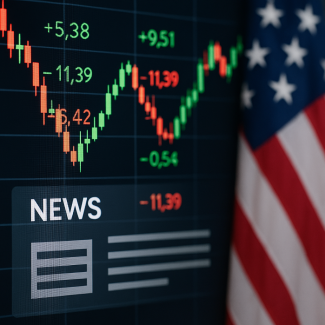
New Highs, Old Worries: Inflation, Trade, and What Comes Next
Markets are no longer sanguine about the whipsawing of trade negotiations, inflation, interest rates, earnings, and the usual market movers. Fear of missing out, or FOMO, is at work. Just today, inflation numbers were hotter than expected a trade deal with China was announced, trade negotiations were halted with Canada, and we were reminded of the bombs dropped on Iran's nuclear facilities.
Along with the hotter inflation numbers, the Labor Department this week confirmed that Gross Domestic Product figures indicated a shrinking of the economy by 0.5% in the first quarter. Nike announced price increases as a result of upcoming tariffs. At the same time, the 90-day “drop-dead” date for completing trade negotiations became “flexible.”
Consumer confidence in June decreased from 98.4 to 93, and personal spending also declined. Despite this news, the S&P 500 closed at a record high. One big question is what impact the wealth effect will have on consumer spending. Despite record highs in the market during the Biden administration, consumers had decidedly negative feelings about the economy. We’ll see if that pattern repeats during the second Trump administration.
Vanguard reported today: Nearly three-quarters ,71% of Americans say they plan to shift their savings approach this summer to prioritize emergency savings and flexibility, according to a new Vanguard survey.
https://www.cnbc.com/2025/06/27/how-revenge-saving-can-improve-your-finances.html
The yield curve is currently lumpy, with lower Treasury yields in the intermediate term and higher short-term yields. The Federal Reserve Chairman testified before Congress this week and remains wary of inflation, but reiterated expectations that the Fed will reduce rates two more times this year. The President continues to criticize him and seems closer to naming his replacement a year before the current term ends. Markets are concerned that appointing a “shadow” Fed Chair could threaten the nonpartisan role of the Federal Reserve. This apolitical stance helps maintain the credibility of the Fed and the United States as the world’s leading economy.
This concern is reflected in the continuing weakness of the U.S. dollar. My wife and I returned from Europe in mid-May, and when I went to the local ATM, the conversion rate was a little over $1.13 for €100. Today, the rate is over $1.17.
Even with the new highs in the S&P 500, the FTSE ex-US Developed Markets ETF is up 17% year-to-date. We expect that trend—international stock markets outperforming domestic stocks—to continue.
Hot Topic: U.S. Economy Powers Through Trade Tensions—What It Means for Investors
This website is informational only and does not constitute investment advice or a solicitation. Investments and investment strategies recommended in this blog may not be suitable for all investors. SAS Financial Advisors, LLC and its members may hold positions in the securities mentioned within this newsletter. SAS Financial Advisors, LLC is not responsible for any third-party content referenced.
The SAS Newsletters are posted on the SAS Blog weekly: https://www.sasadvisors.com/blog

